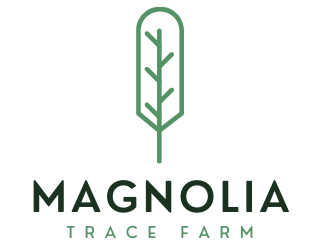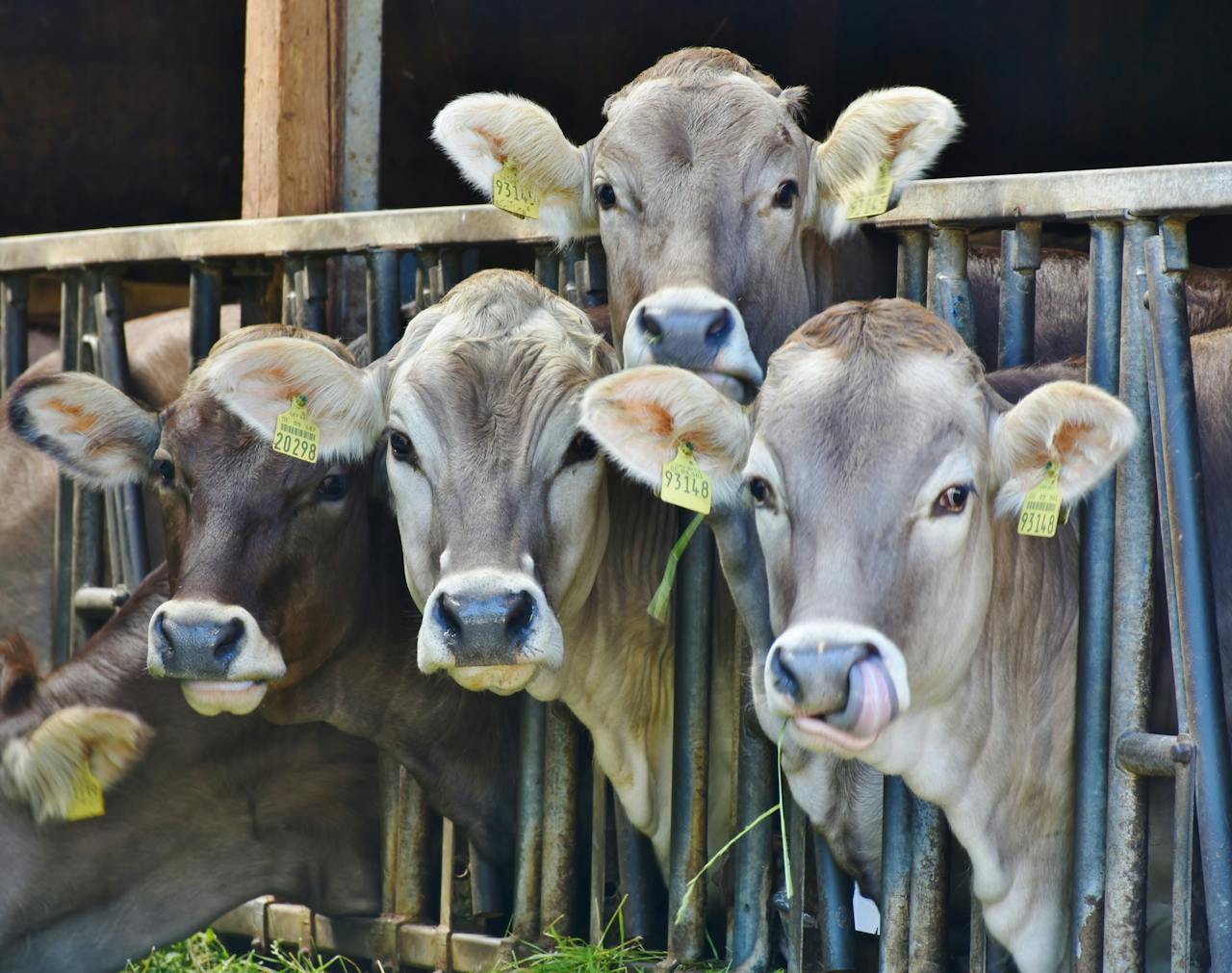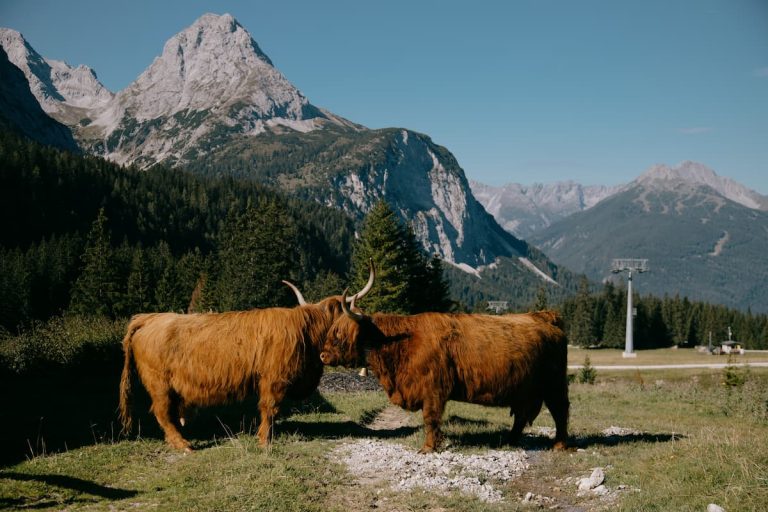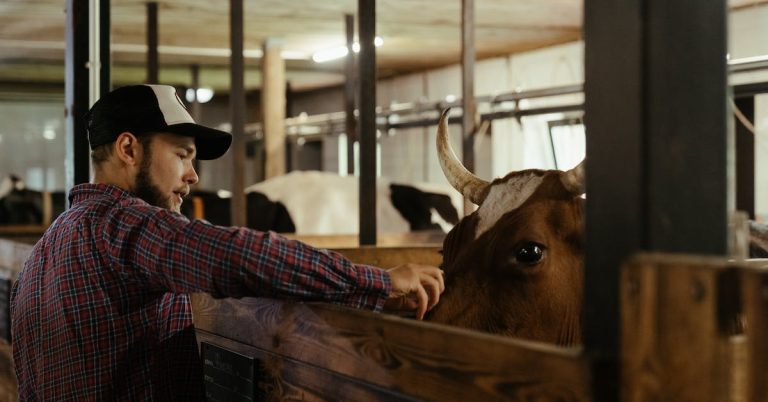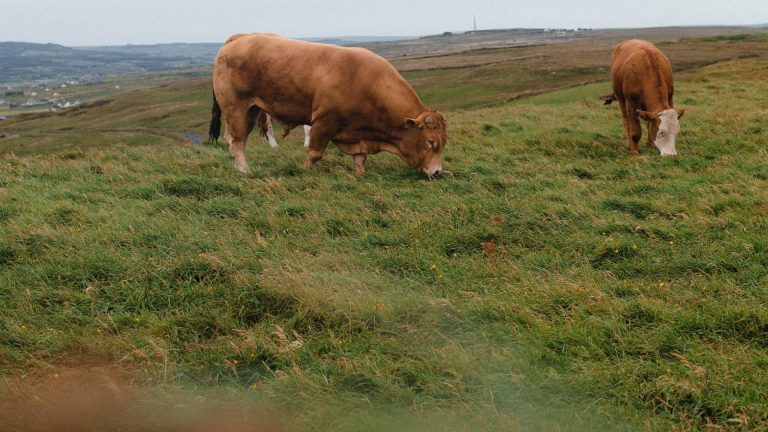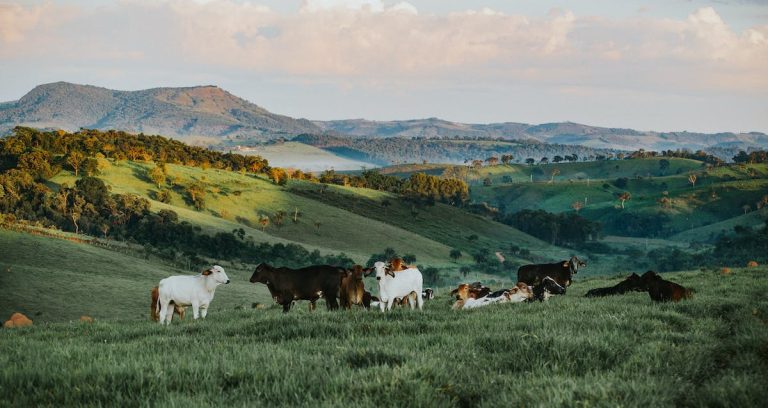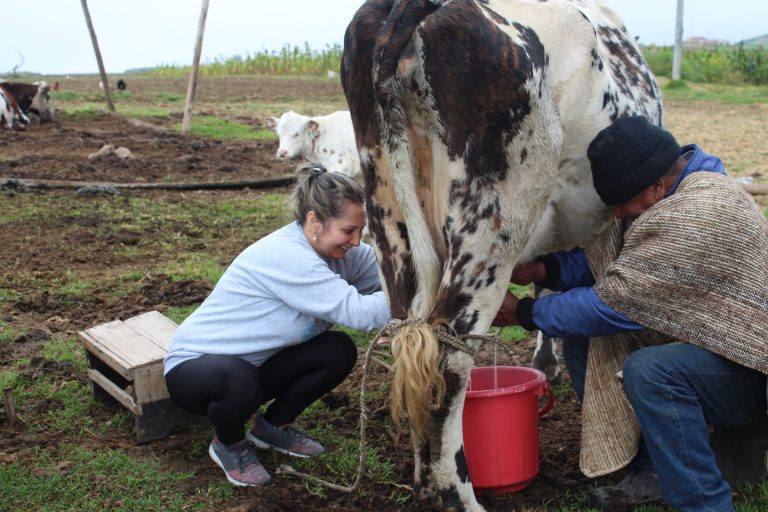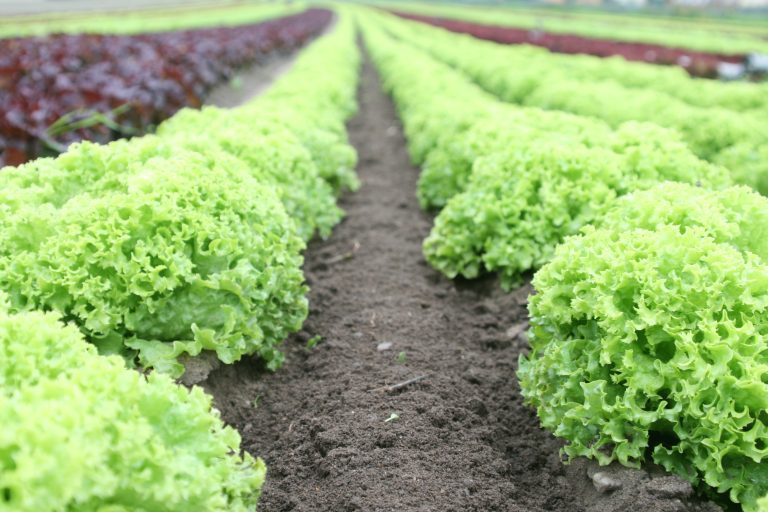How Many Acres Per Cow? Optimal Land Requirements for Cattle Grazing
Figuring out how many acres you need per cow is key for smart farming. It’s not just about space – it’s about good land use and happy, healthy cows.
The general rule is one cow per acre, but this can change based on many factors. Grass type, soil quality, and rainfall all play a part. Some places might need more land, while others can support more cows in less space.
We need to think about what cows eat and how much. A cow eats about 4% of its body weight each day. That means a 1,000-pound cow needs about 40 pounds of food daily. Good planning helps make sure there’s enough grass to go around.
Key Takeaways
- Stocking rates vary based on land and climate conditions
- Proper grazing management is crucial for pasture health and cow nutrition
- Regional differences greatly impact the number of cows per acre
Understanding Stocking Rates and Pasture Management
Stocking rates and pasture management are key to raising healthy cattle. We’ll look at what affects stocking rates, how to manage pastures well, and different grazing methods.
Factors Influencing Stocking Rates
Stocking rates depend on many things. The main factor is forage production. This varies based on soil, rainfall, and plant types.
Pasture size matters too. Bigger pastures can often hold more cows. The length of the grazing season affects rates. Longer seasons need lower rates to keep grass healthy.
We also need to think about the utilization rate. This is how much of the grass cows actually eat. A good rate is usually 50% of total growth.
Cow size is important. Bigger cows need more food. For example, a 1,150-pound cow needs about 1.16 times the space of a 1,000-pound cow.
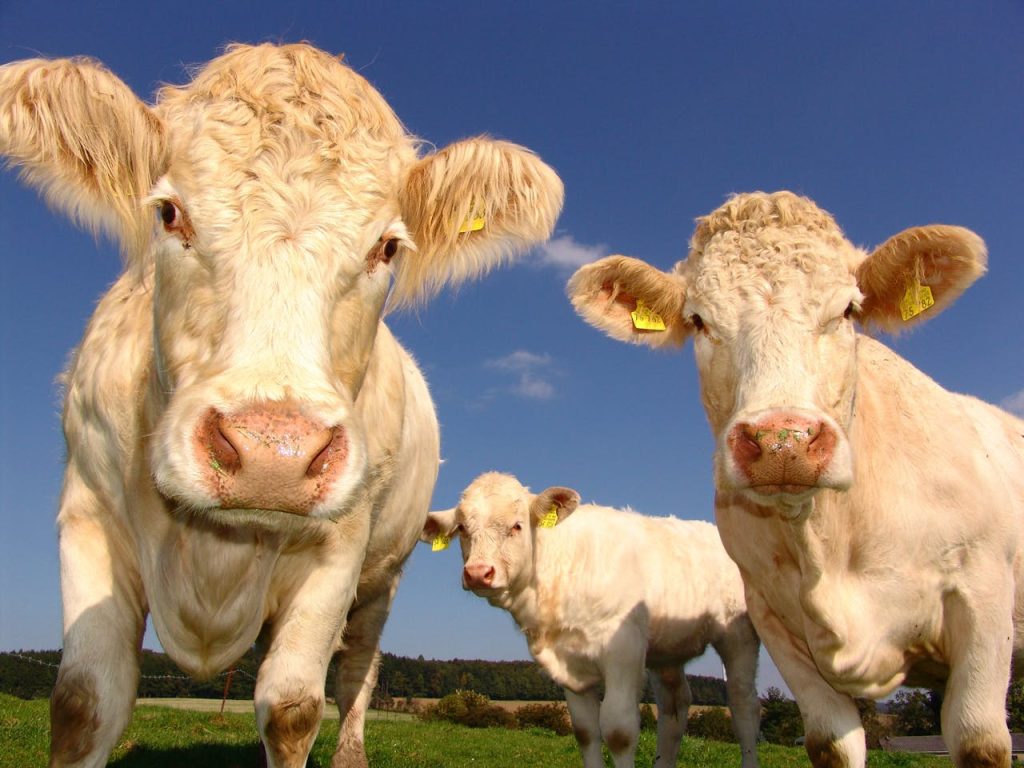
Principles of Pasture Management
Good pasture management keeps grass healthy and cows fed. We need to watch grass height closely. Don’t let cows graze grass too short.
Rest periods are crucial. Grass needs time to grow back after grazing. This helps roots stay strong.
We should test soil regularly. This tells us if we need to add nutrients. Healthy soil grows more grass.
Weed control is a must. Weeds steal water and food from good plants. We can control them by mowing or spraying.
Water sources are vital. Cows need clean water near grazing areas. This helps spread grazing evenly across pastures.
Rotational Grazing vs. Continuous Grazing
Rotational grazing moves cows between pastures. This gives grass time to rest and regrow. It can boost forage production by up to 30%.
We divide pastures into smaller parts called paddocks. Cows graze one paddock at a time. They move when grass gets short.
Continuous grazing lets cows roam freely. It’s simpler but can lead to overgrazing in some spots. Cows tend to eat their favorite plants first.
Rotational grazing takes more work. We need to move cows often. But it can support more cows on the same land. It also helps keep pastures in better shape over time.
The best method depends on your farm. Think about your time, land, and goals when choosing.
Animal Units and Acreage Allocation
Figuring out how many acres you need per cow involves understanding animal units and proper land allocation. Let’s break down the key concepts to help you plan your cattle grazing.
Defining an Animal Unit
An animal unit (AU) is a way to measure grazing impact based on animal size. One AU equals a 1,000-pound mature cow with or without a nursing calf up to 6 months old. This standard helps compare different types of livestock.
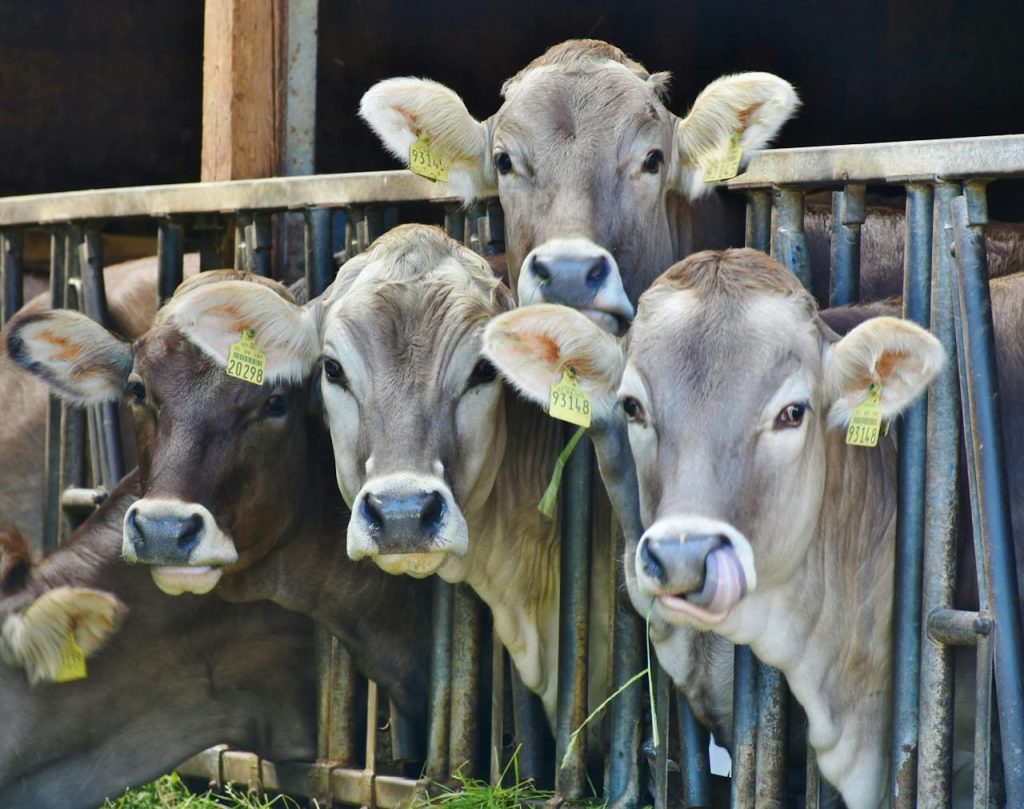
Smaller animals like sheep or goats count as less than one AU. A 600-pound steer might be 0.6 AU, while a 1,400-pound bull could be 1.4 AU.
Using AUs lets us calculate how many animals can graze an area without harming the land.
Calculating Animal Unit Month (AUM)
An Animal Unit Month (AUM) is the amount of forage one AU needs for a month. It’s about 780 pounds of dry matter forage.
To find AUMs for your land:
- Measure total forage production
- Subtract what you want left after grazing
- Divide by 780 pounds
This tells you how many AUs your land can support for a month. For yearly planning, multiply by 12.
Optimal Acreage Per Cow/Calf Pair
The ideal acreage per cow-calf pair varies based on land quality and climate. On average, you’ll need 1-2 acres per pair.
Rich, irrigated pastures might support 1 pair per acre. Poor, dry land could need 5+ acres per pair.
We recommend starting conservative. It’s better to have extra grass than to overgraze. You can always add more cattle if you see unused forage.
Keep track of your grass growth and adjust as needed. Good grazing management leads to healthier land and more productive cattle.
Forage Quality, Quantity, and Grazing Efficiency
The amount of land needed per cow depends on several key factors related to forage. These include the quality and quantity of available forage, as well as how efficiently the land is grazed.
Assessing Forage Quality and Availability
Forage quality affects how much a cow needs to eat. High-quality forage is more nutritious, so cows need less of it. We measure forage quality by its protein content and digestibility.
Forage availability varies by season and rainfall. In lush seasons, more forage grows per acre. During dry spells, less is available. We need to monitor pasture conditions regularly.
To estimate forage, we can:
- Take grass height measurements
- Clip and weigh samples
- Use pasture stick tools
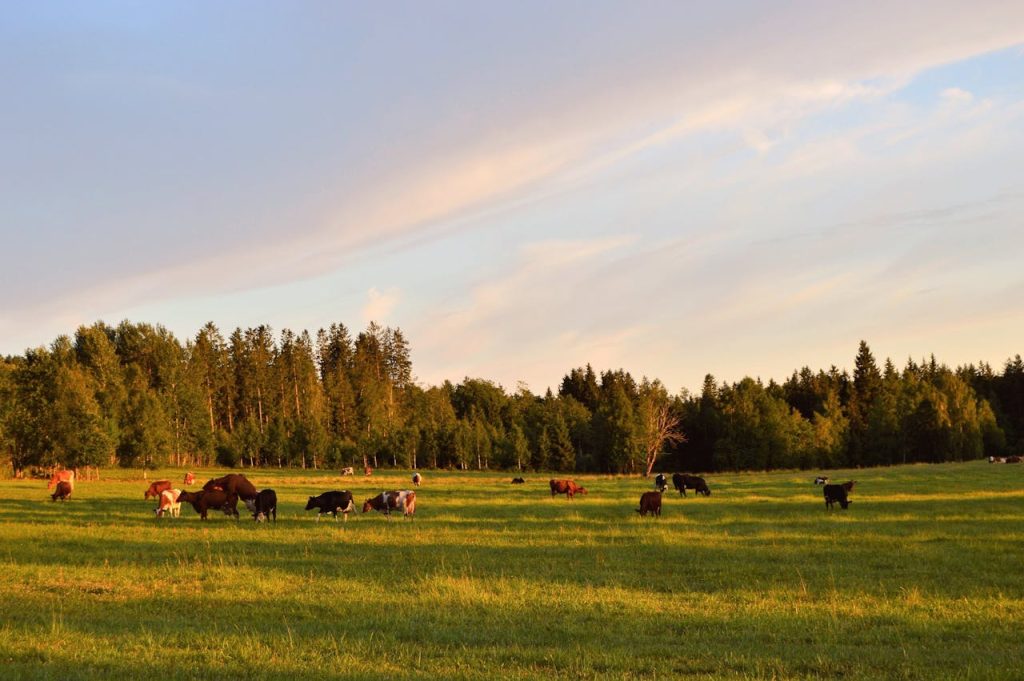
Maximizing Forage Yield and Productivity
We can boost forage yield through good management. This means more feed per acre for our cows. Some key practices:
- Soil testing and fertilizing as needed
- Overseeding to fill in bare spots
- Weed control to reduce competition
- Rotating pastures to allow regrowth
Highly managed fields can yield 4+ tons of forage per acre yearly. But 2-3 tons is more typical for average pastures.
Grazing Strategies for Efficient Land Use
Smart grazing boosts how much forage cows actually eat. This is called grazing efficiency. We aim for 25-30% efficiency in basic setups. Better systems can reach 70%.
Rotational grazing is key. We divide pastures into smaller paddocks. Cows graze one area, then move to the next. This:
- Prevents overgrazing
- Allows grass regrowth
- Spreads manure evenly
With good rotation, we may need just 0.5 to 2 acres per cow. Poor management might require 5-10 acres or more.
Pasture Health and Soil Conservation
Good pasture health and soil conservation are key to raising cows efficiently. These practices help maintain productivity and protect the land for future use.
Preventing Overgrazing and Soil Degradation
Overgrazing can harm pastures and soil. We need to watch how many cows graze an area. Rotational grazing helps prevent overuse. This means moving cows to new areas often.
Too many cows can lead to bare spots. These areas are at risk for erosion. We should keep some grass cover at all times.
Using the right number of cows per acre is crucial. This number changes based on grass type and rainfall. A good rule is to leave half the grass uneaten.
Natural Resources Conservation Service Guidelines
The NRCS offers helpful advice for pasture care. They suggest testing soil regularly. This shows what nutrients the land needs.
NRCS also recommends planting diverse grasses. Different plants help build soil health. They say to avoid chemicals when possible.
We can work with NRCS to make a grazing plan. This plan matches cow numbers to land ability. It also includes ways to improve pastures over time.
Soil Fertility and Pasture Conditions
Healthy soil grows better grass. We can improve soil by adding organic matter. This might mean spreading manure or planting cover crops.
Good pasture conditions mean more food for cows. We look for thick, green growth. Weeds or bare spots show problems.
Soil pH is important too. Most grasses like slightly acidic soil. We can add lime if the soil is too acidic. Regular soil tests help us know what to do.
Regional Variations and Advanced Considerations
Cattle grazing needs vary greatly across different regions. We’ll explore how geography, climate, and innovative practices impact land requirements for cows.
Geographical Impact on Pasture Resources
Land requirements per cow can range from 1 to 2 acres depending on soil quality and water access. Terrain plays a crucial role in determining pasture productivity. Flat or gently sloping areas often support more forage growth than steep hillsides.
In mountainous regions, we may need more acreage per cow due to less accessible grazing areas. Coastal plains might offer richer pastures, reducing the land needed per animal.
Soil type also affects grass growth. Clay soils retain moisture well but can become waterlogged. Sandy soils drain quickly but may struggle to support lush vegetation.
Adapting to Climate and Precipitation Zones
Climate and rainfall significantly influence pasture growth and cattle grazing needs. In arid regions with low annual precipitation, we might require 5 acres or more per cow. Conversely, areas with ample rainfall may support a cow on just 1-2 acres.
Temperature extremes affect forage quality. Hot climates can lead to faster plant maturation, reducing nutritional value. Cold regions have shorter growing seasons, necessitating supplemental feeding.
We adapt grazing strategies to match local conditions:
- Dry areas: Implement rotational grazing to prevent overgrazing
- Wet regions: Use proper drainage to maintain pasture health
- Temperate zones: Extend grazing season with cool-season grasses
Incorporating Multi-Species Grazing
Multi-species grazing can optimize land use and improve pasture health. This practice involves grazing different animals together or in rotation.
Benefits of multi-species grazing:
- Increased biodiversity
- Better weed control
- Improved pasture utilization
We might graze sheep or goats with cattle. These smaller animals often eat plants that cows avoid, leading to more efficient land use. For example, goats readily consume brush and weeds.
In some cases, multi-species grazing can reduce the acreage needed per cow. However, careful management is crucial to prevent overgrazing and ensure all animals’ nutritional needs are met.
Frequently Asked Questions
The number of acres needed per cow depends on several factors. Grazing practices, land quality, and local conditions all play a role. Let’s explore some common questions about cow-to-acre ratios.
What is the ideal space requirement per cow for grazing?
Most cattle need 2-2.5 acres of pasture for grazing. This amount ensures enough grass for a cow to eat throughout the year. The exact space can vary based on grass quality and rainfall.
How does cow density change with rotational grazing practices?
Rotational grazing can increase cow density. By moving cattle between pastures, we allow grass to regrow. This method can reduce the acres needed per cow compared to continuous grazing.
What factors determine the number of cows that can be sustained on an acre?
Several factors affect how many cows an acre can support. Soil quality, climate, and water access are key. Good soil and mild weather can allow for more cows per acre.
How does the requirement of acreage per cow vary by state?
Acreage needs vary widely by state due to differences in climate and land. In wetter states, we might need fewer acres per cow. Drier states often require more land per animal to ensure enough food.
Can you sustain multiple cows on a small land area, such as 2 acres?
It’s challenging to sustain multiple cows on just 2 acres. This small area typically won’t provide enough grass for more than one cow. Supplemental feed would be necessary to support multiple animals.
What is the recommended acreage per cow for grass-fed cattle operations?
Grass-fed cattle often need more space than grain-fed cows. We usually recommend 2.5 to 3 acres per cow for grass-fed operations. This extra space ensures enough grass growth to feed the cattle year-round.
